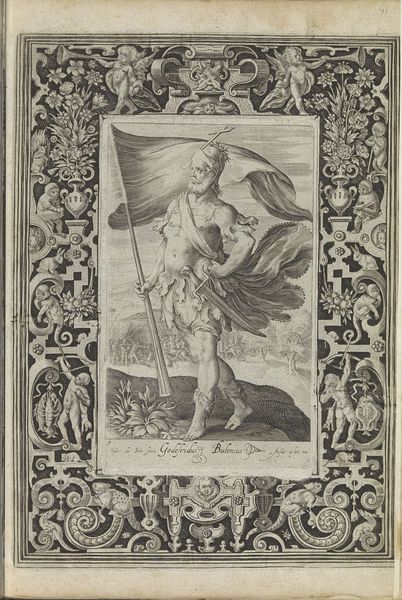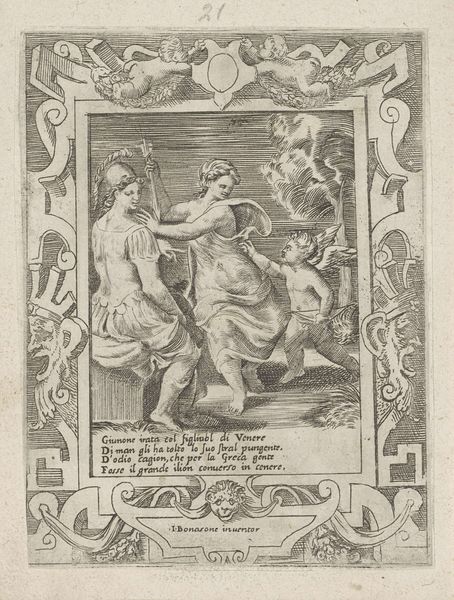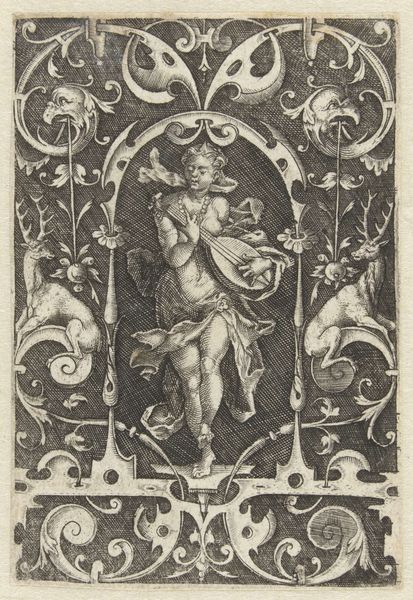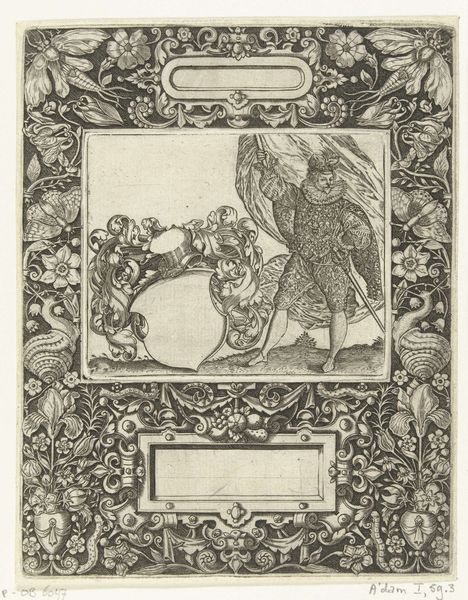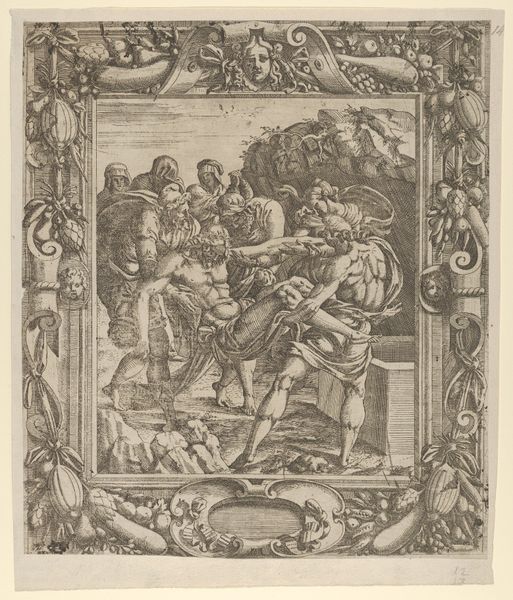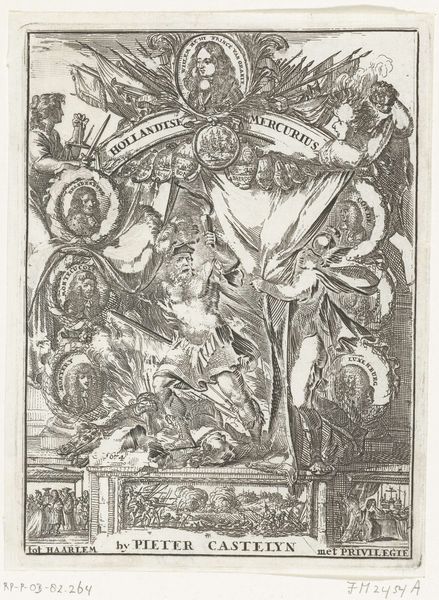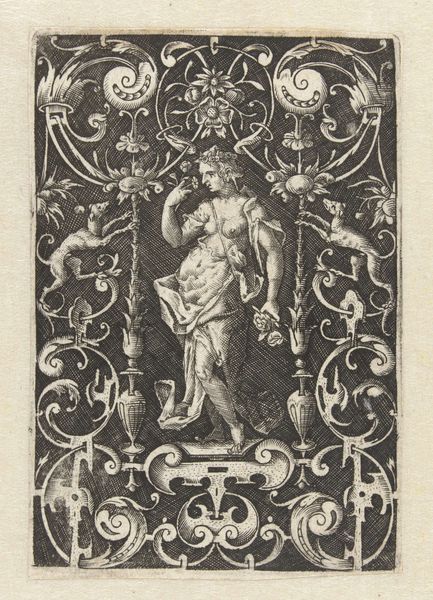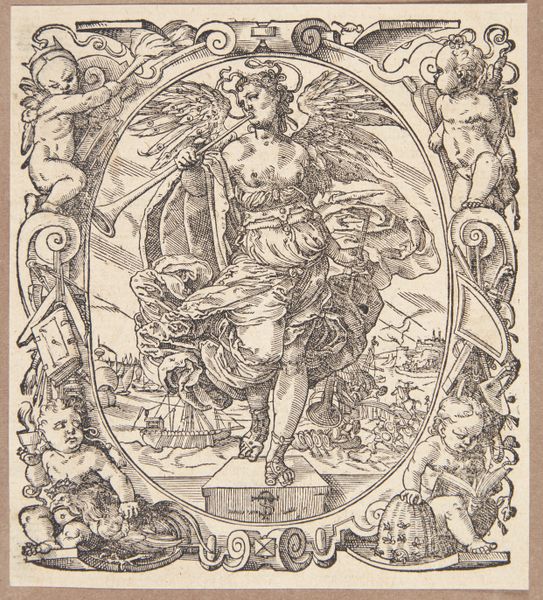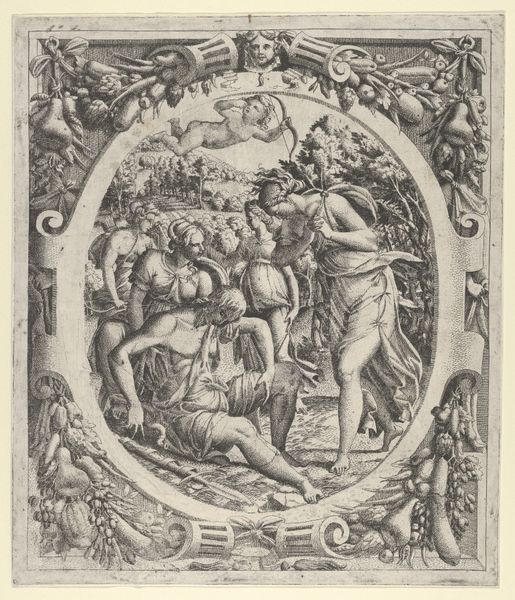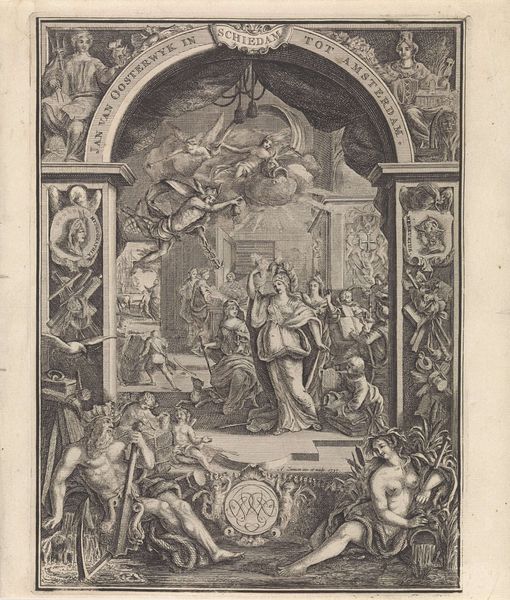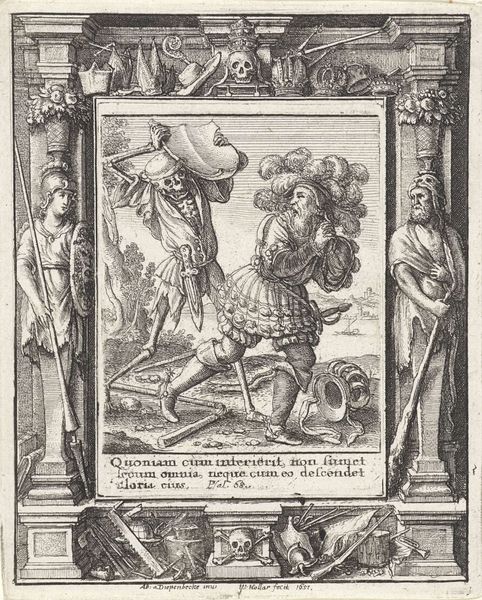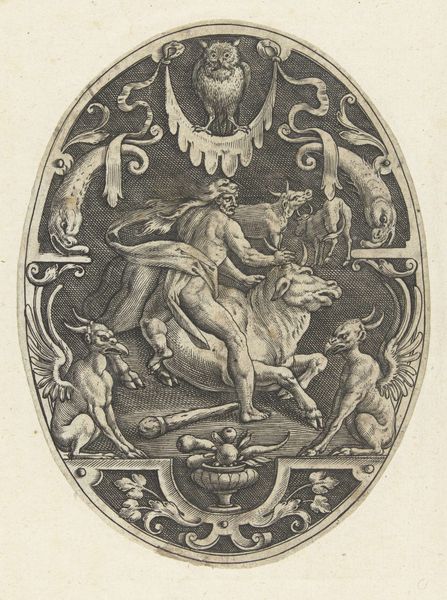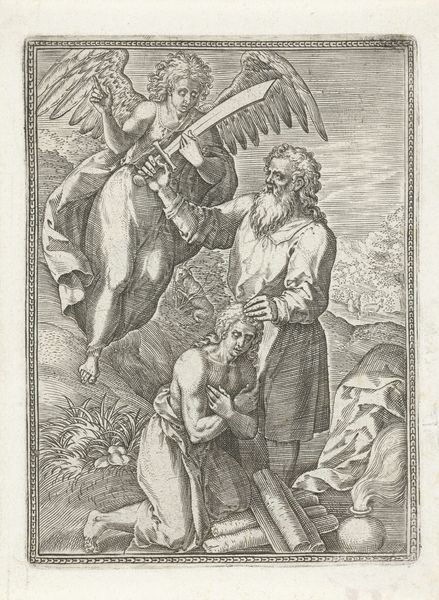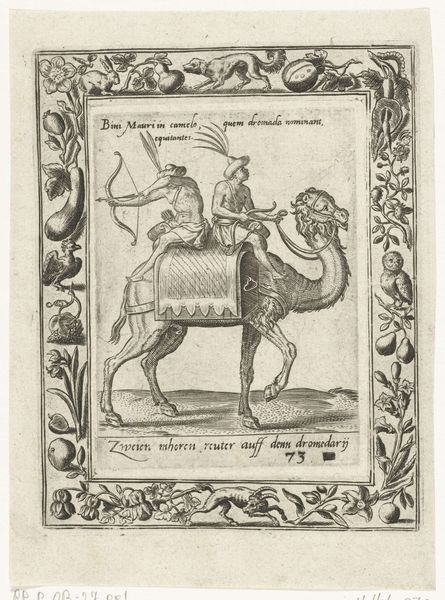
print, metal, engraving
#
portrait
#
baroque
# print
#
metal
#
landscape
#
figuration
#
history-painting
#
engraving
Dimensions: height 287 mm, width 205 mm
Copyright: Rijks Museum: Open Domain
Editor: So, this is "Alexander de Grote" by Nicolaes de Bruyn, created sometime between 1582 and 1635. It’s a print, an engraving on metal. The ornate border feels a bit like a stage, framing Alexander on horseback. What strikes you most about the image? Curator: I'm immediately drawn to the density of symbolic imagery here. The central figure, of course, is Alexander the Great, a historical figure loaded with meaning. But it's the visual language *around* him that speaks volumes about how the artist, and perhaps the culture of the time, viewed Alexander. Notice the frame – a dense collection of flora, fauna, skulls...what might these disparate images evoke, do you think? Editor: The skulls seem like an obvious memento mori, a reminder of mortality even in the midst of glory. The animals maybe suggest different aspects of his character or his dominion? Curator: Precisely! Skulls whisper of the inevitable end, the fate that awaits even the mightiest conqueror. Alexander, a symbol of triumph and earthly power, is thus juxtaposed with images of vulnerability and death. The animals can certainly symbolize his reach, his ambition extending to the natural world. And think about *why* the artist chose these *particular* animals. What qualities do they possess? Editor: I see an owl, so wisdom, and maybe the fox implies cunning? Curator: Yes! Each creature adds another layer to our understanding of Alexander – or at least, the *desired* understanding crafted by the artist. This isn't just a portrait; it's an icon, meant to instill particular emotions and understandings. This careful placement and selection builds cultural memory. Editor: It’s amazing how much meaning can be packed into what I initially just saw as a decorative border. Curator: Indeed. By recognizing and understanding these symbolic elements, we can unravel not only the artist's intent, but also the values and beliefs of the culture that produced this powerful image. Editor: It completely reframes how I see the piece, like the whole image is speaking a hidden language.
Comments
No comments
Be the first to comment and join the conversation on the ultimate creative platform.
